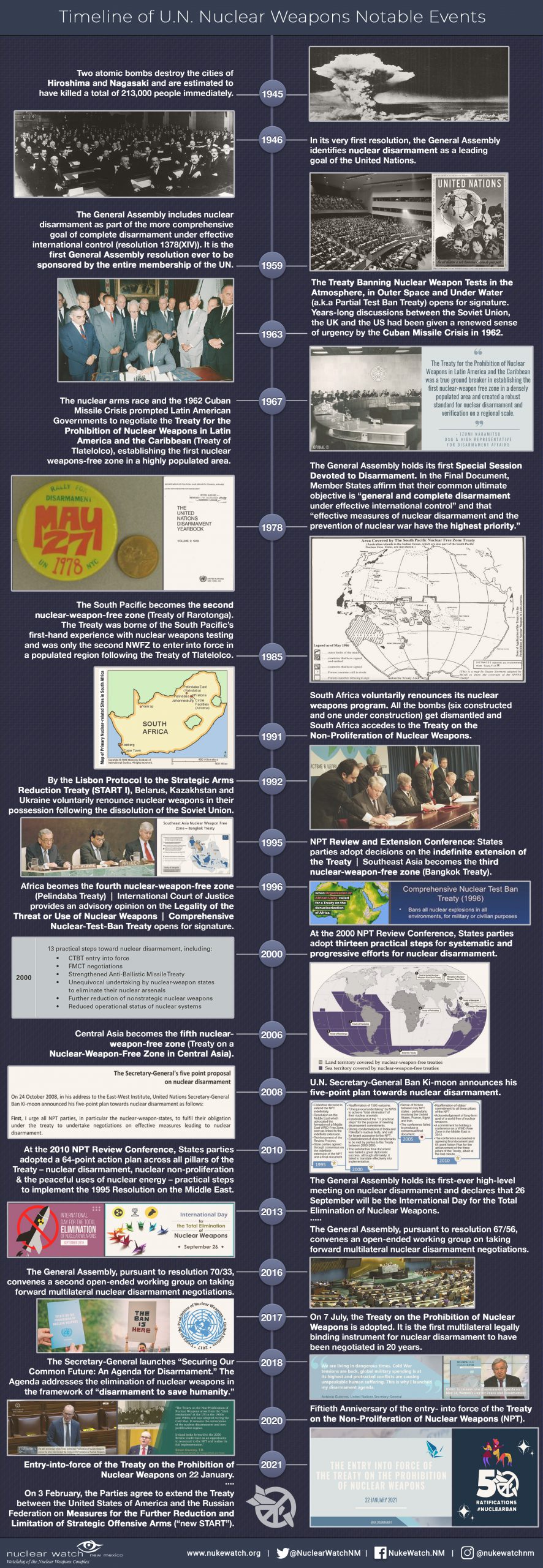Today, Sunday, September 26, 2021, marks the United Nations International Day for the Total Elimination of Nuclear Weapons. The United Nations has been working toward achieving global nuclear disarmament since the organization’s inception; it was the subject of the General Assembly’s first resolution in 1946, with a mandate to make specific proposals for the elimination of atomic weapons and all other major weapons adaptable to mass destruction. The International Day for the Total Elimination of Nuclear Weapons has been observed annually since 2014, serving as a tool to enhance public awareness and education about the threat posed to humanity by nuclear weapons and the necessity for their total elimination. In 2013, the year the International Day for the Total Elimination of Nuclear Weapons was introduced, the President of the General Assembly noted that a “renewed international focus on the catastrophic consequences of nuclear weapons has led to a reinvigoration of international nuclear disarmament efforts.”
Although there’s still quite a ways to go until international nuclear disarmament has been completely achieved, these renewed efforts and focus have resulted in many positive, concrete successes towards that end. Last year at the UN commemoration of the International Day for the Total Elimination of Nuclear Weapons, civil society and states supporting a ban encouraged the international community to take steps towards such a treaty. This year, the promise of ban treaty talks has come significantly closer. In the run up to the UN General Assembly First Committee on Disarmament and International Security, this year’s International Day for the Total Elimination of Nuclear Weapons should serve as a reminder of what can be achieved, and the work that still needs to be done.
Currently over half the world’s population live in countries that have nuclear weapons or are members of nuclear alliances. As citizens of the world, it is imperative now to say enough is enough, and put pressure on these governments to sign the Nuclear Weapons Ban Treaty. There are a number of recent calls, made by non-nuclear governments and civil society to the nuclear armed and allied countries, to commit to achieving the global elimination of nuclear weapons by 2045.
This appears to be far into the future for those who believe that nuclear disarmament can and should be achieved much earlier. However, the goal of 2045 provides a global rallying call to build a stronger movement, and avoid instant dismissal as unrealistic by those who currently support nuclear deterrence or rely on it for their security.
In addition, the COVID-19 and climate crisis are changing the security environment, opening up a greater possibility to achieve the goal of nuclear weapons elimination by 2045 if not before.
As a global family, we can no longer allow the cloud of nuclear conflict to shadow our work to spur development, achieve the Sustainable Development Goals and end the COVID-19 pandemic. Now is the time to lift this cloud for good, eliminate nuclear weapons from our world, and usher in a new era of dialogue, trust and peace for all people. António Guterres

